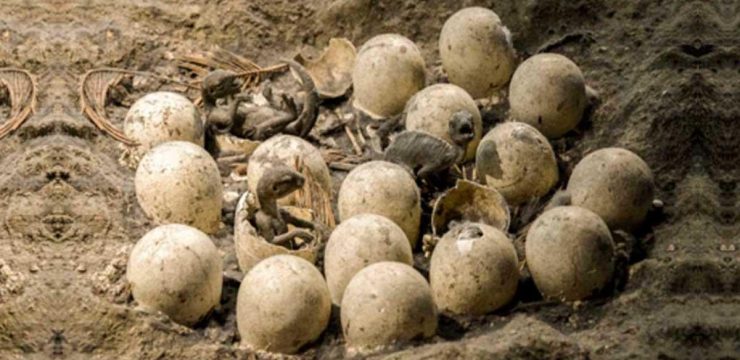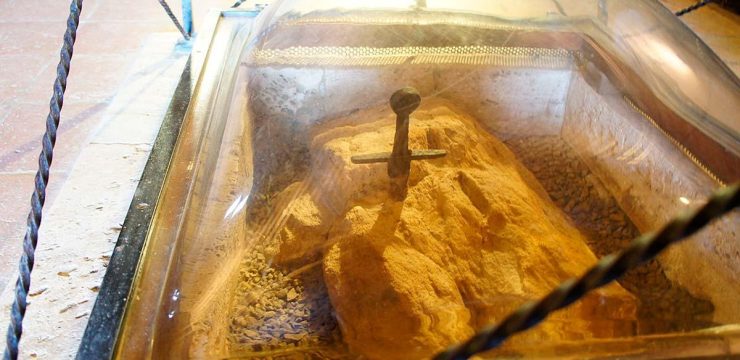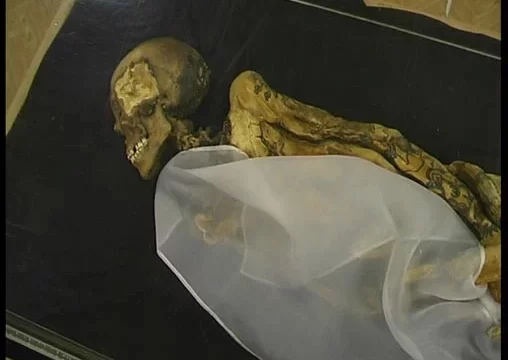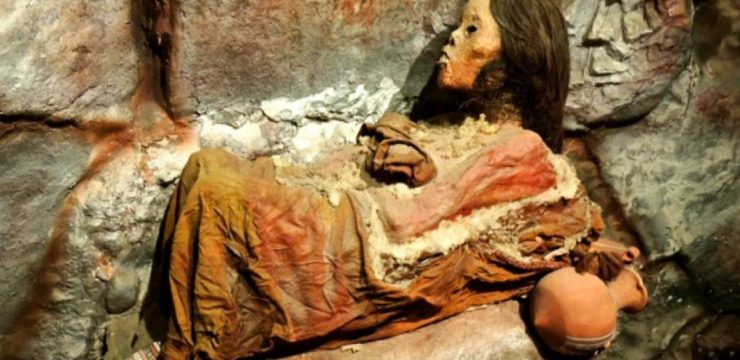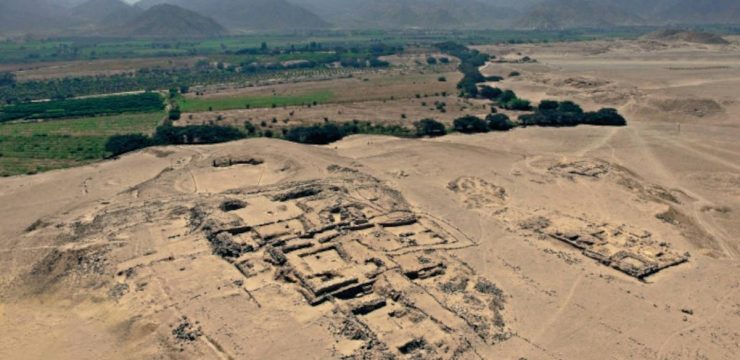In the expansive chronicles of human history, few archaeological discoveries strike the heart and imagination as profoundly as the skull of a medieval warrior, forever fused to his chainmail armor. This haunting remnant, unearthed from the battlegrounds of Visby on the island of Gotland, Sweden, stands as a silent witness to one of the most defining and brutal conflicts of the 14th century. Not only does it embody the raw intensity of medieval warfare, but it also immortalizes a moment of human valor, pain, and sacrifice in a way few artifacts can.
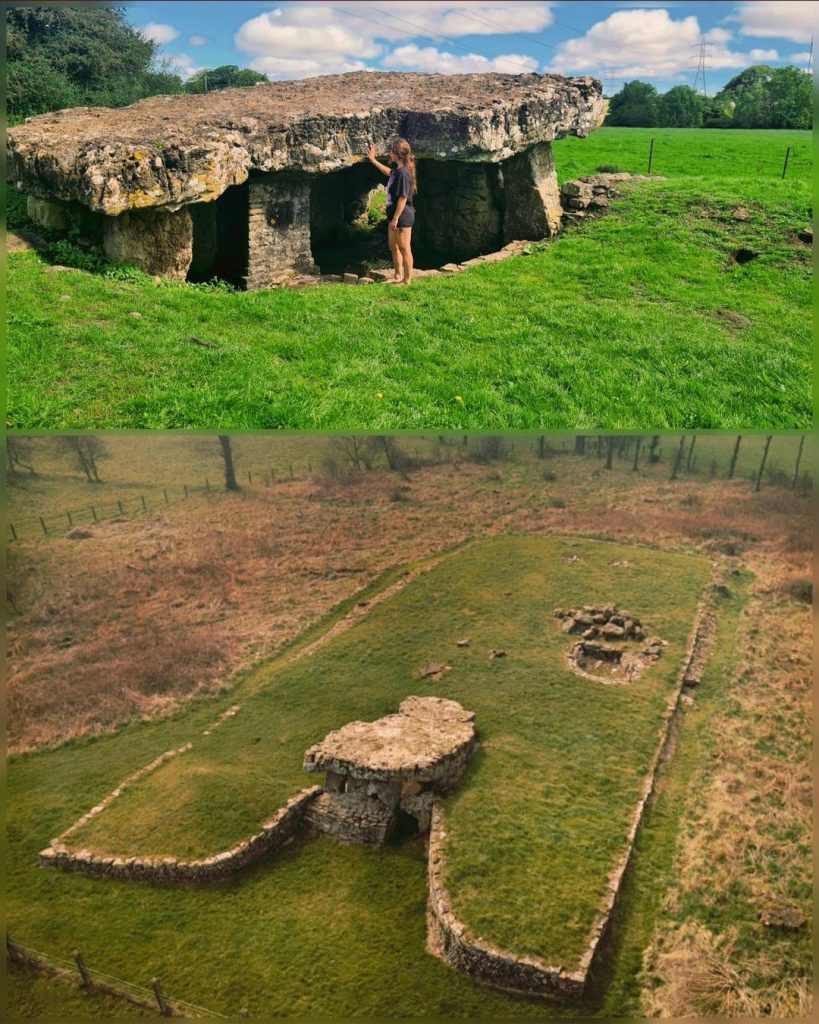
The year was 1361, and the stage was set on the serene, sun-drenched island of Gotland in the Baltic Sea. Though peaceful in appearance, Gotland held great strategic and economic importance. It was a prominent trading center affiliated with the Hanseatic League, a powerful confederation of merchant guilds and market towns that dominated commercial activity throughout Northern Europe. This made Gotland an attractive, even irresistible, prize for ambitious rulers. One such figure was Valdemar Atterdag, the formidable king of Denmark, who sought to reclaim his nation’s former glory and expand his influence over the Baltic region. With an eye on Gotland, Valdemar launched a calculated campaign to seize control of the island, and soon, Danish ships darkened the horizon.
For the people of Gotland, war had come to their doorstep. Largely composed of local peasants and townsfolk, the defenders of the island were far from professional soldiers. They lacked the polished discipline and high-grade weaponry of a royal army, but they possessed something far more compelling—an unwavering resolve to defend their homeland. When the Danish forces landed and advanced toward the fortified city of Visby, the people of Gotland answered the call, hastily assembling a militia to resist the invasion.
What followed was not a battle between equals, but rather a desperate and courageous defense by a group of local men against a far superior military force. The fields outside Visby soon erupted into a terrifying melee. The clash of steel resounded through the air as swords met shields, and arrows obscured the summer sky. The ground beneath their feet shook with the thunder of cavalry charges, and cries of both defiance and agony filled the battlefield. Among the chaos, one warrior—a man whose name history did not record—stood firm in his chainmail armor, fighting with every ounce of strength he had.
But fate would not spare him. At some point during the brutal engagement, a crushing blow from an enemy weapon pierced through both his defenses and his destiny. The force of the strike was so great that it fused the links of his chainmail into the bone of his skull, permanently welding flesh, metal, and history together. It was the warrior’s final stand, a moment of extraordinary bravery and unyielding resistance cut tragically short.
As the battle concluded, the fields of Visby were strewn with the bodies of the fallen. Estimates suggest that over 1,800 defenders perished during the conflict. In a striking and somewhat compassionate move, the victors chose not to leave the dead exposed to the elements. Instead, they were buried—many still wearing the armor they had fought and died in. These mass graves remained untouched for centuries, hidden beneath layers of soil and time, until modern excavations brought them back into the light.
It was during one such excavation that archaeologists uncovered the fused skull and chainmail, a grim yet profoundly moving discovery. This particular artifact encapsulated the savage brutality of medieval warfare in a way that no text or chronicle could ever fully capture. It also underscored a deeply human truth—the armor meant to protect this warrior ultimately became a part of his death. Yet in that very fusion of iron and bone lies a compelling symbol of human resilience and the high cost of defending one’s homeland.
The find was not only a historical treasure, but also a rich source of scientific and cultural insight. Scholars were able to study the construction of the chainmail, the nature of the injuries, and the broader context of medieval combat techniques. Through forensic analysis, experts gained a clearer understanding of the types of weapons used, the dynamics of the fighting, and the conditions the defenders faced. In essence, the fused skull became a time capsule—one that revealed not only how people fought, but also how they lived, died, and honored their fallen.
This relic also carries significant emotional and symbolic weight. It serves as a solemn reminder of the sacrifices made by countless unnamed individuals throughout history—people who, despite lacking titles or fame, demonstrated extraordinary courage. The warrior from Visby may have died anonymous, but through this powerful discovery, his story resonates across the centuries. He is no longer just a statistic or a shadow in the annals of warfare. He is a symbol of defiance, a testament to human bravery, and a lasting echo of a battle that shaped the destiny of an entire region.
The Battle of Visby itself marked a turning point in Scandinavian history. It exposed the vulnerabilities of local militias in the face of well-organized national armies, and it signaled a shift in the balance of power in Northern Europe. The battle’s aftermath left an indelible mark not only on Gotland but also on the cultural memory of the region. The burial mounds and recovered artifacts, such as the fused skull and chainmail, serve as both historical documentation and a memorial to those who stood their ground in the face of overwhelming odds.
In contemplating this remarkable discovery, we are reminded that history is not merely a sequence of dates and events, but a rich tapestry woven from the lives of real people. The fused remains of this warrior call us to remember the price of conflict, the dignity of those who perish in its wake, and the enduring power of human courage. This silent relic from Visby does not just tell a story—it invites us to listen, to reflect, and to honor the countless lives that have shaped our world in ways both seen and unseen.
